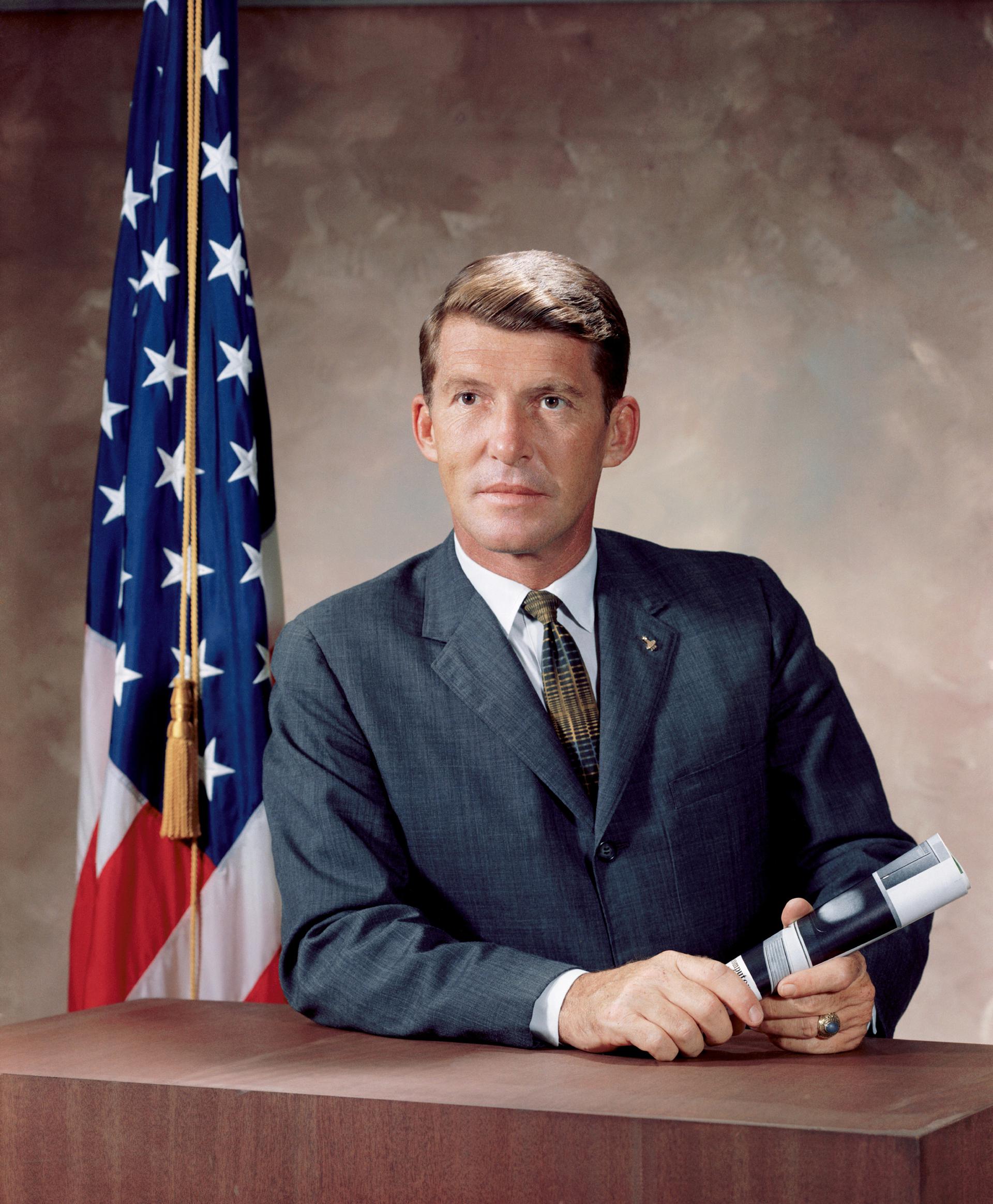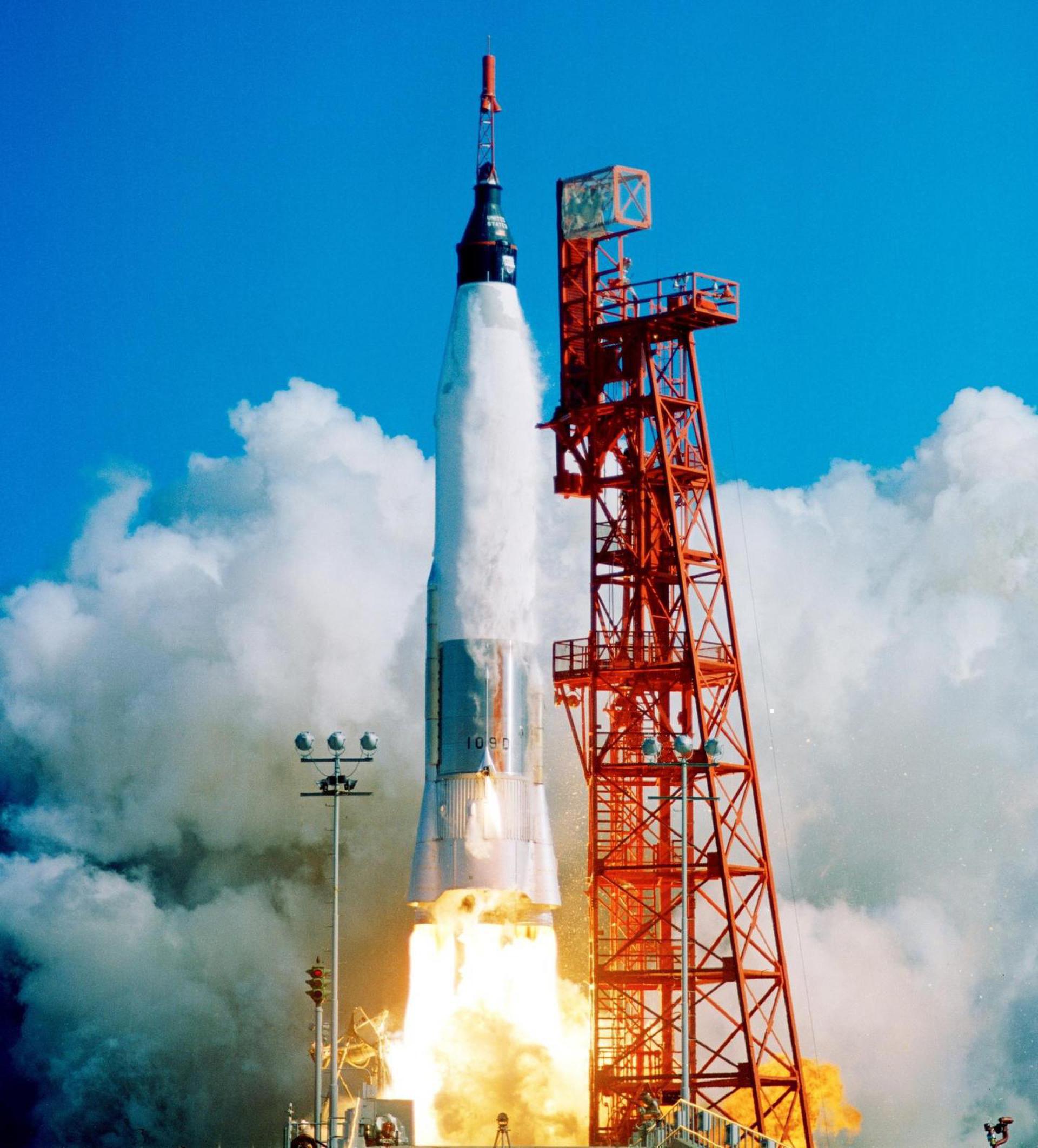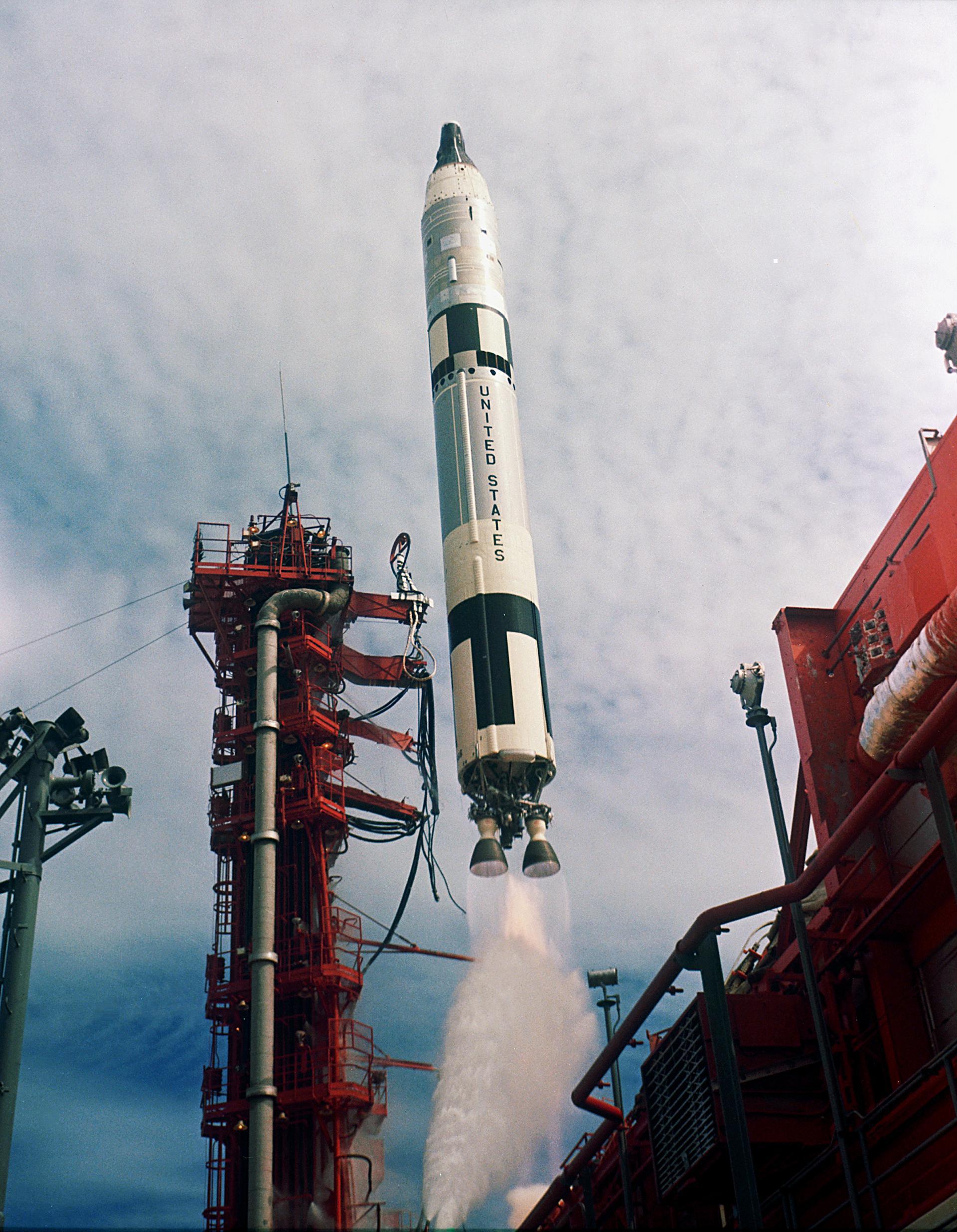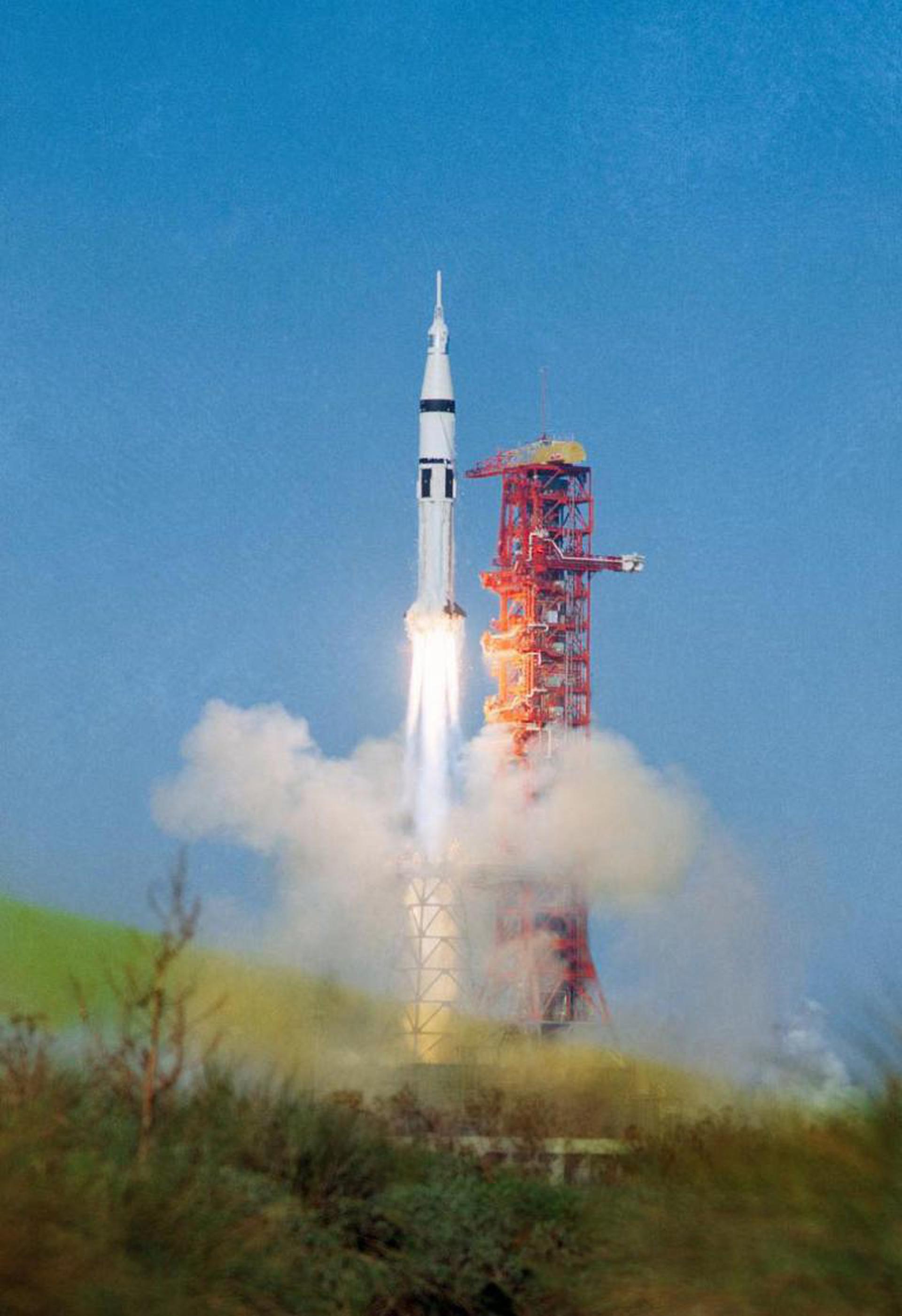Wally Schirra
American - (NASA)
Deceased
Date of Birth: March 12, 1923
Date of Death: May 3, 2007
Walter Marty Schirra Jr. was an American naval aviator and NASA astronaut. In 1959, he became one of the original seven astronauts chosen for Project Mercury, which was the United States' first effort to put human beings in space. On October 3, 1962, he flew the six-orbit, nine-hour, Mercury-Atlas 8 mission, in a spacecraft he nicknamed Sigma 7. At the time of his mission in Sigma 7, Schirra became the fifth American and ninth human to travel into space. In the two-man Gemini program, he achieved the first space rendezvous, station-keeping his Gemini 6A spacecraft within 1 foot (30 cm) of the sister Gemini 7 spacecraft in December 1965. In October 1968, he commanded Apollo 7, an 11-day low Earth orbit shakedown test of the three-man Apollo Command/Service Module and the first manned launch for the Apollo program.
Atlas LV-3B | Mercury-Atlas 8
National Aeronautics and Space Administration | United States of AmericaCape Canaveral SFS, FL, USA
Oct. 3, 1962, 12:15 p.m.
Titan II GLV | Gemini VI-A
National Aeronautics and Space Administration | United States of AmericaCape Canaveral SFS, FL, USA
Dec. 15, 1965, 1:37 p.m.
Status: Success
Mission:
Gemini 6A was the fifth crewed mission of NASA's Project Gemini. The mission was commanded by Command Pilot Walter M. Schirra, Jr. and Pilot Thomas P. Stafford. The mission achieved the first crewed rendezvous with the Gemini 7 spacecraft. The mission began on December 15, 1965, 13:37:26 UTC and ended on December 16, 1965, 15:28:50 UTC.
Low Earth OrbitSaturn IB | Apollo 7
National Aeronautics and Space Administration | United States of AmericaCape Canaveral SFS, FL, USA
Oct. 11, 1968, 3:02 p.m.
Status: Success
Mission:
The Apollo 7 crew was commanded by Walter M. Schirra, with Command Module Pilot Donn F. Eisele, and Lunar Module Pilot R. Walter Cunningham. Their mission was Apollo's 'C' mission, an 11-day Earth-orbital test flight to check out the redesigned Block II Apollo Command/Service Module (CSM) with a crew on board.
Low Earth OrbitThe National Aeronautics and Space Administration is an independent agency of the executive branch of the United States federal government responsible for the civilian space program, as well as aeronautics and aerospace research. NASA have many launch facilities but most are inactive. The most commonly used pad will be LC-39B at Kennedy Space Center in Florida.
Falcon 9
CSG-3
Space Launch Complex 4E - Vandenberg SFB, CA, USACSG-3 is an Earth observation satellite for the Italian Space Agency, part of a reconnaissance constellation using synthetic aperture radars operatin…
Long March 7A
Shijian 29 A-B
201 - Wenchang Space Launch Site, People's Republic of China2 satellites officially described as for "demonstration of new technologies for spatial targets detection" purposes.
Long March 4B
Tianhui 7
Launch Area 94 (SLS-2 / 603) - Jiuquan Satellite Launch Center, People's Republic of ChinaA satellite officially described as for cartography purposes, details TBD.
Soyuz 2.1b/Fregat-M
AIST-2T 01 & 02
Cosmodrome Site 1S - Vostochny Cosmodrome, Siberia, Russian FederationA pair of Russian optical Earth observation satellites built by the Progress Rocket Space Centre for obtaining stereo images of the Earth's surface, …
Long March 3B/E
Fengyun-4C
Launch Complex 2 (LC-2) - Xichang Satellite Launch Center, People's Republic of ChinaChina's geostationary meteorological satellite program FY-4 (Feng Yun 4) is the second generation of chinese geostationary meteorological satellites.





